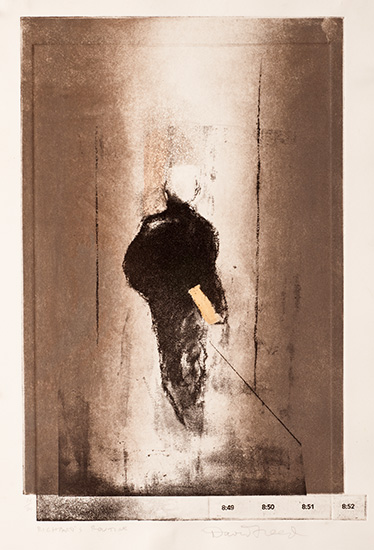Introduction
In July 2005, Pam Turner met with Richard Carlyon to record some of his memories of the arts at VCU’s prior incarnation as Richmond Professional Institute. In particular, they discussed the BANG! festival and its subsequent iterations as BANG! BANG! and BANG! BANG! BANG! and the composer John Cage’s involvement as a featured performer.
The BANG! festival had its origins in faculty member Jon Bowie’s connection to the Ann Arbor Film Festival, and when he arrived at RPI in 1963 he served as the moving spirit to inaugurate a spring arts festival in Richmond in 1964. Participants over the three years of the festival included artists Barnett Newman and Donald Judd, choreographers Lucinda Childs and Twyla Tharp, and composers John Cage and David Tudor, as well as a number of other luminaries of the avant garde arts of the mid–1960s. The festival’s name, BANG!, was inspired by the Roy Lichtenstein painting of the same title. In its second and third years, the festival received support from Sydney and Frances Lewis, the area’s most important collectors of late twentieth-century American art.
 |
David Freed
Richard’s Routine, 1997
Intaglio with color
19 x 12 in., edition 20 |
Eleanor Rufty, Carlyon’s widow, recalls that the festival was of a piece with what was then a very flexible and adventuresome sense of potential permeating that moment in the history of the RPI School of the Arts, a feeling that coincided with the art “happenings” of the decade and a pervasive belief in the importance of art as a touchstone for defining and illuminating the increasingly complicated character of the national zeitgeist. Also, she notes that the festivals “set a tone for the community of artists in Richmond and the school that connected the school to that spirit of change and its ideas and concepts.”
The videotaped interview with Richard Carlyon has been divided into two parts. The first speaks more succinctly to the origins of BANG! and John Cage’s performance of “Variation VI,” which received its premiere at the festival, and the second is a more discursive follow-up on the same event. John Cage was accompanied by David Tudor in the performance and at the appearance.
A short statement by Pam Turner about the making of the video accompanies the piece. 
John Cage (1912–1992) was an American composer, music theorist, writer, and artist. A pioneer of indeterminacy in music, electroacoustic music, and non-standard use of musical instruments, Cage was one of the leading figures of the post-war avant-garde. Cage’s notable compositions include Music of Changes, Concert for Piano and Orchestra, I Ching, and 4’ 33” (a composition composed of four minutes and thirty-three seconds of silence). His collaborations with his longtime partner, dancer/choreographer Merce Cunningham, and his friend and fellow musician/composer David Tudor were fundamental in the development of twentieth-century music theory and modern dance.
David Tudor (1926–1996) was an American pianist and composer and a leading contributor to avant-garde and experimental music. Though his earliest works and performances are well known, Tudor is often remembered for his body of work with John Cage and for work created for the Merce Cunningham Dance Company. Together Tudor and Cage wrote and performed notable pieces such as Music of Changes, Concert for Piano and Orchestra, and Cage’s 4’ 33”. After Cage’s death in 1992, Tudor assumed the responsibilities as music director of the Cunningham company.
return to top
![]()
![]()
![]()

![]()